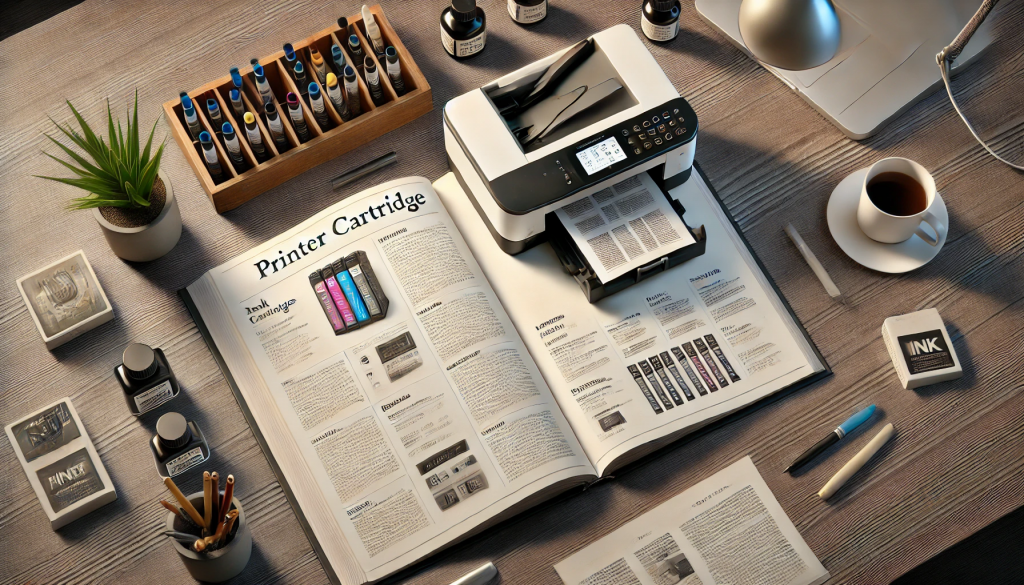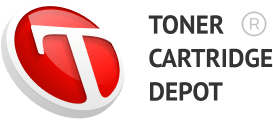
Introduction: The Ink-redible Challenge
Imagine this: You’re rushing to print an important document just minutes before a deadline. Suddenly, your printer flashes that dreaded “low ink” warning. You scramble to find a replacement cartridge, but all the stores are closed, and the only cartridge you have on hand is incompatible. Sound familiar?
Running out of ink at the worst possible moment is a common frustration for many printer owners. The cost of cartridges, the confusion surrounding which ones to buy, and the environmental impact of discarded cartridges can make printing a daunting task. But fear not! This comprehensive guide is here to help you navigate the world of printer cartridges, saving you money, reducing waste, and empowering you to make informed decisions about your ink.
Anatomy of a Cartridge: Know Thy Ink
Before diving into the nitty-gritty of cartridges, let’s first understand the basics. Printer cartridges come in two main types: inkjet and toner.
Inkjet Cartridges
Inkjet cartridges are used in inkjet printers, which spray tiny droplets of liquid ink onto paper to create an image or text. These cartridges typically contain three main components:
- Printhead: The part that sprays the ink onto the paper.
- Ink Reservoir: The container that holds the ink.
- Chip: A small electronic component that communicates with the printer.
Toner Cartridges
Toner cartridges are used in laser printers, which use a laser beam to produce an image on a drum that is then transferred to paper using toner (a fine powder). These cartridges also have several key components:
- Toner Powder: The fine, dry ink particles.
- Drum Unit: The component that transfers the toner to the paper.
- Chip: Similar to inkjet cartridges, this communicates with the printer.
Pigments vs. Dyes
The ink itself can be either pigment-based or dye-based. Pigment-based inks are known for their longevity and resistance to fading, making them ideal for documents and archival purposes. Dye-based inks, on the other hand, offer more vibrant colors and are commonly used for photo printing.
The Great Cartridge Debate: OEM vs. Compatible vs. Refilled
When it comes to buying cartridges, you have three main options: OEM, compatible, and refilled.
OEM (Original Equipment Manufacturer) Cartridges
OEM cartridges are made by the printer’s manufacturer. They are designed to work perfectly with your printer, offering the best quality and reliability. However, they come at a premium price.
Pros:
- Guaranteed compatibility and quality
- Often includes warranty and customer support
Cons:
- Expensive
- Limited availability in some regions
Compatible Cartridges
Compatible cartridges are made by third-party manufacturers and are designed to work with specific printer models. They offer significant cost savings compared to OEM cartridges.
Pros:
- Much cheaper than OEM cartridges
- Widely available
Cons:
- Quality can vary significantly between brands
- Potential for printer warranty issues
Refilled Cartridges
Refilled cartridges are used cartridges that have been cleaned, refilled with ink or toner, and resold. They are the most environmentally friendly option.
Pros:
- Most cost-effective option
- Environmentally friendly
Cons:
- Quality and reliability can vary
- Risk of leaks or printer damage
Tips for Choosing Reputable Suppliers
When opting for compatible or refilled cartridges, it’s crucial to choose reputable suppliers. Look for companies with positive reviews, clear return policies, and guarantees for their products. Websites like Amazon and eBay often have customer ratings and reviews that can guide your decision.
Decoding the Cartridge Lingo: Page Yield, Shelf Life, and More
Printer cartridges come with various specifications that can be confusing. Here are some key terms you need to know:
Page Yield
Page yield refers to the number of pages a cartridge can print before running out of ink. This is usually based on a standard test page with 5% coverage.
Example: An ink cartridge with a page yield of 300 pages can print 300 standard test pages before it needs to be replaced.
High-Yield (XL) Cartridges
High-yield cartridges contain more ink or toner than standard cartridges, allowing you to print more pages. They are usually labeled as “XL.”
Example: A high-yield cartridge might have a page yield of 600 pages compared to 300 pages for a standard cartridge.
Shelf Life and Expiration Date
The shelf life of a cartridge is the length of time it can be stored before the ink or toner starts to degrade. The expiration date is the manufacturer’s recommended date by which the cartridge should be used for optimal performance.
Example: A cartridge with a shelf life of 24 months should be used within two years of purchase.
Printing Habits and Ink Usage
Your printing habits significantly affect how quickly you use up your ink. Frequent printing of high-coverage documents (e.g., photos, graphics) will deplete your ink faster than occasional printing of text documents.
The Art of Cartridge Care: Extend Your Ink’s Lifespan
Proper care and handling of your cartridges can extend their lifespan and save you money.
Storage Tips
- Keep Cartridges Sealed: Store unused cartridges in their original packaging until you’re ready to use them.
- Store in a Cool, Dry Place: Heat and humidity can degrade the ink or toner.
- Position Upright: Store cartridges upright to prevent leaks.
Handling Tips
- Avoid Touching the Chip: The chip is sensitive and can be damaged by static electricity.
- Use Cartridges Regularly: Infrequent use can cause the ink to dry out and clog the printhead.
Troubleshooting Common Issues
- Clogged Printheads: Run the printer’s cleaning cycle or use a printhead cleaning solution.
- Low Ink Warnings: Sometimes, shaking the cartridge can redistribute the ink and allow you to print a few more pages.
- Extracting Every Last Drop: Manually override the printer’s low ink warning to continue printing until the cartridge is completely empty.
Printing Smarter: Optimize Your Ink Usage
There are several ways to optimize your printer settings and habits to save ink.
Printer Settings
- Draft Mode: Use draft mode for less critical documents. This uses less ink.
- Grayscale Printing: Print in black and white when color isn’t necessary.
Ink-Saving Fonts and Formatting Tricks
- Eco-Fonts: Fonts like Ecofont and Ryman Eco are designed to use less ink.
- Smaller Font Size: Reduce the font size to save ink.
- Avoid Bold and Italics: These styles use more ink than regular text.
Ink-Efficient Tools
- Print Preview: Always preview your document before printing to avoid mistakes.
- Print Multiple Pages per Sheet: Use your printer settings to print multiple pages on a single sheet.
Environmental Considerations: Reduce, Reuse, Recycle
Printer cartridges have a significant environmental impact. Here are some ways to mitigate it:
Cartridge Recycling and Refilling Programs
Many manufacturers and retailers offer recycling programs for used cartridges. Some even offer discounts on new cartridges when you recycle your old ones.
Tips for Reducing Overall Printing Needs
- Go Digital: Use digital documents and e-signatures whenever possible.
- Print Double-Sided: Reduce paper and ink usage by printing on both sides of the paper.
- Edit Before Printing: Proofread and edit documents on your computer to minimize the need for reprints.
Buying Guide: Choosing the Right Cartridge for Your Needs
Selecting the right cartridge involves considering several factors:
Step-by-Step Guide
- Identify Your Printer Model: Check your printer’s manual or the manufacturer’s website for the correct cartridge model.
- Determine Your Printing Needs: Consider how often and what types of documents you print.
- Choose Between Standard and High-Yield: If you print frequently, high-yield cartridges offer better value.
Recommended Cartridges for Popular Printer Models
- HP OfficeJet Pro 9015: Use HP 962XL high-yield cartridges for maximum page yield.
- Canon PIXMA TS8320: Opt for Canon PGI-280XL and CLI-281XL cartridges for vibrant photos and long-lasting text.
- The HP LaserJet Pro M426fdn: the HP CF226X toner cartridge is a high-capacity cartridge that offers an increased page yield compared to standard capacity cartridges.
Money-Saving Hacks: Stretch Your Printing Budget
Here are some additional tips to help you save money on cartridges:
Finding Deals and Discounts
- Subscribe to Retailer Newsletters: Many retailers offer exclusive discounts to subscribers.
- Use Cashback Websites: Websites like Rakuten offer cashback on online purchases.
- Check for Coupons: Look for coupon codes before making a purchase.
Ink Subscription Services
Many printer manufacturers offer ink subscription services that automatically send you new cartridges when you’re running low. These services often come with discounts compared to buying cartridges individually.
Buying in Bulk
Buying cartridges in bulk can save you money in the long run. Just ensure you have proper storage to keep the cartridges in good condition.
Tracking Ink Usage and Spending
Keep a log of your ink usage and expenses to identify patterns and find areas where you can cut costs.
Conclusion: Print with Confidence
By now, you should have a comprehensive understanding of printer cartridges and how to get the most out of your ink. From choosing the right type of cartridge to optimizing your printer settings and caring for your cartridges, these tips and tricks will help you save money, reduce waste, and make informed decisions.
Remember to recycle your used cartridges, explore ink subscription services, and consider reputable suppliers like Toner Cartridge Depot. They offer a wide selection of consumables for printers and copiers such as HP, Canon, Brother, and Xerox at competitive prices with fast delivery. By following this guide, you’ll be well-equipped to handle any printing challenge that comes your way. Happy printing!
